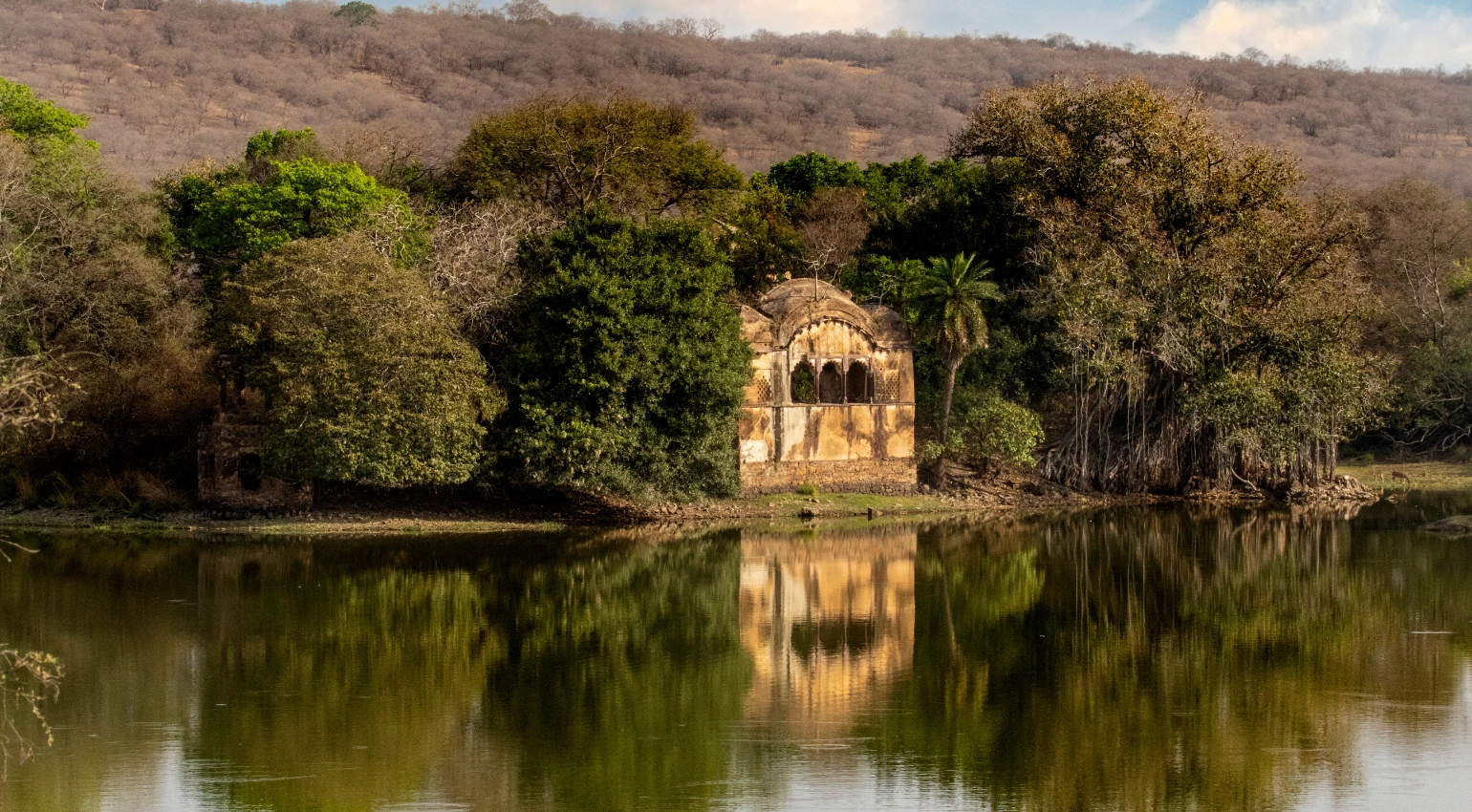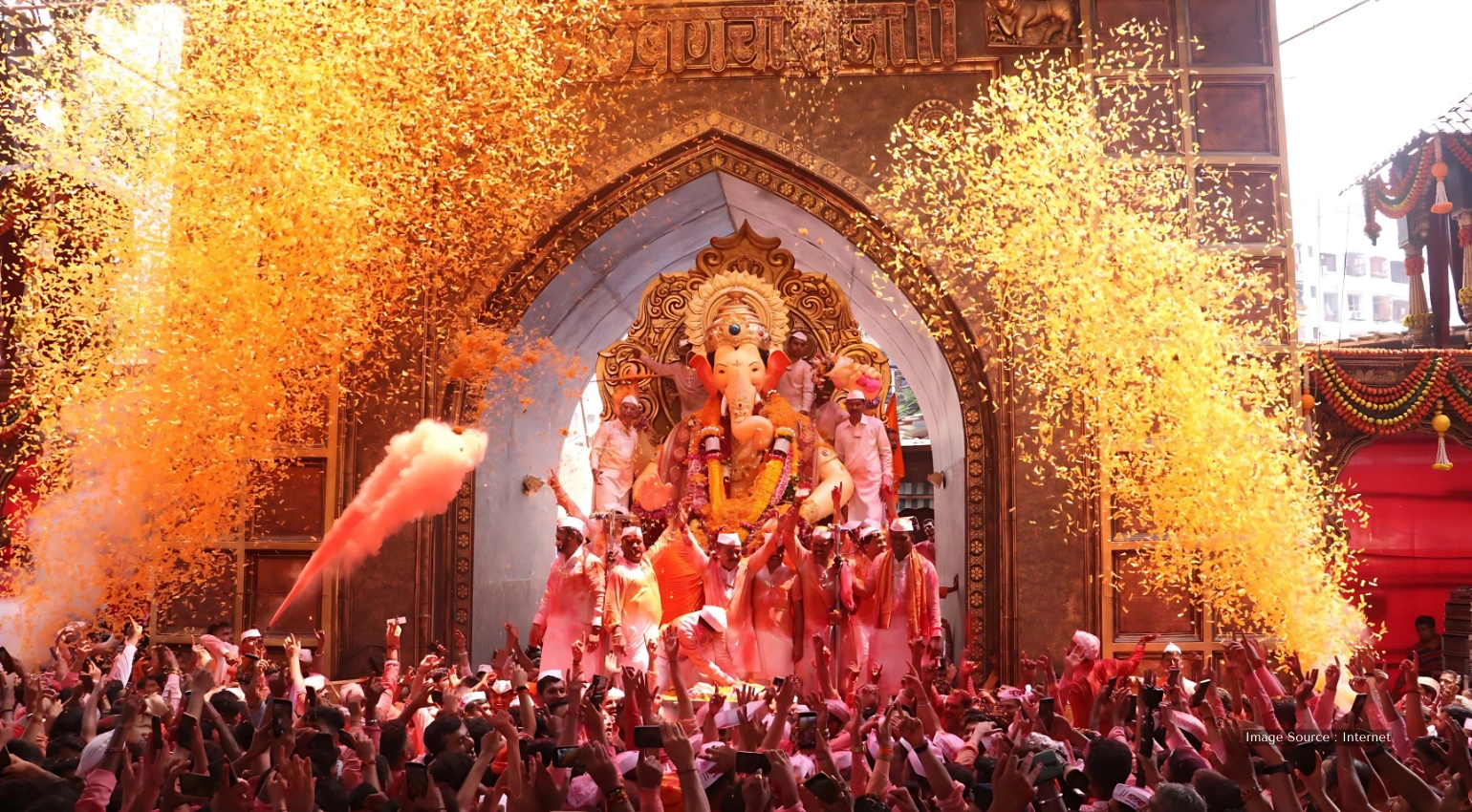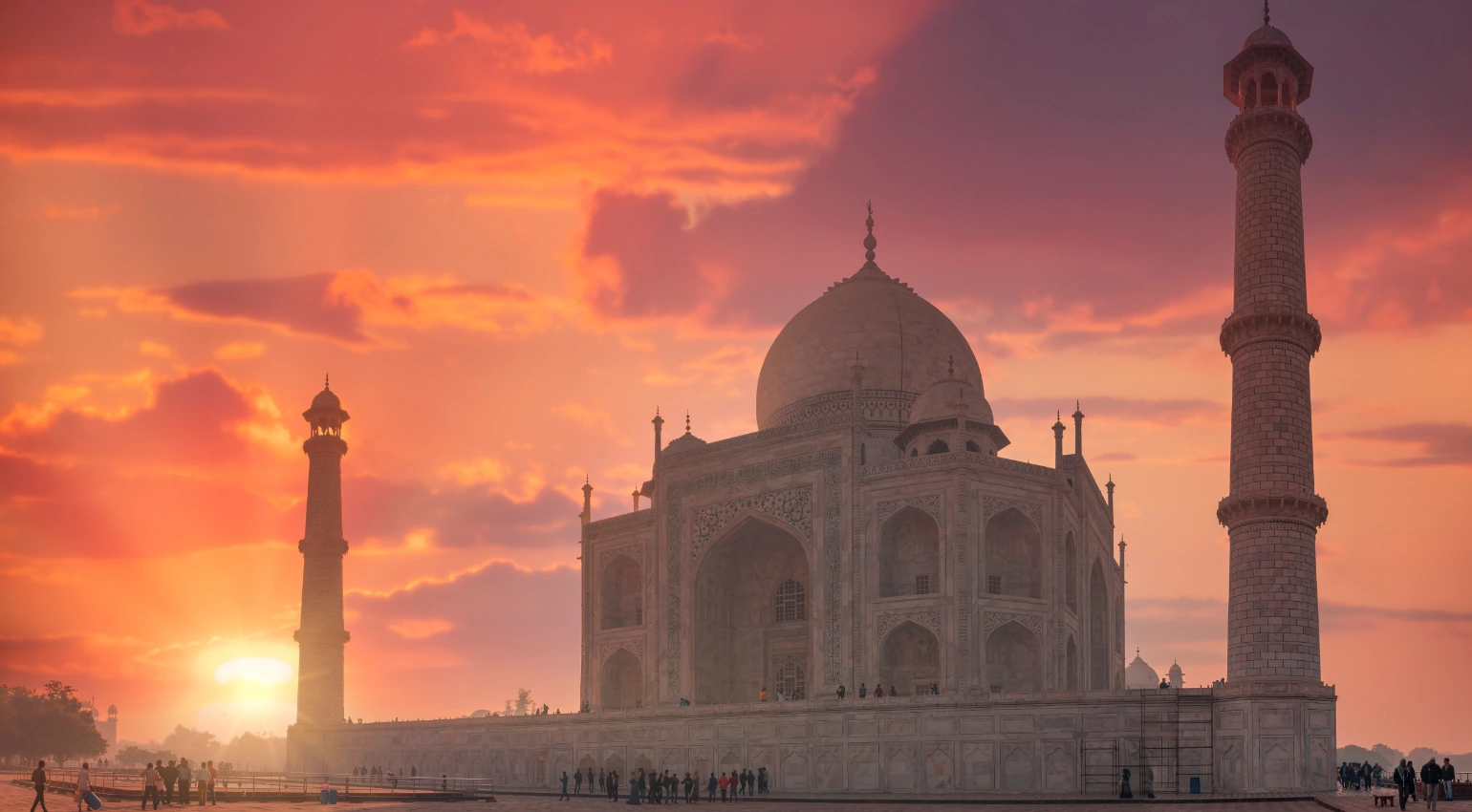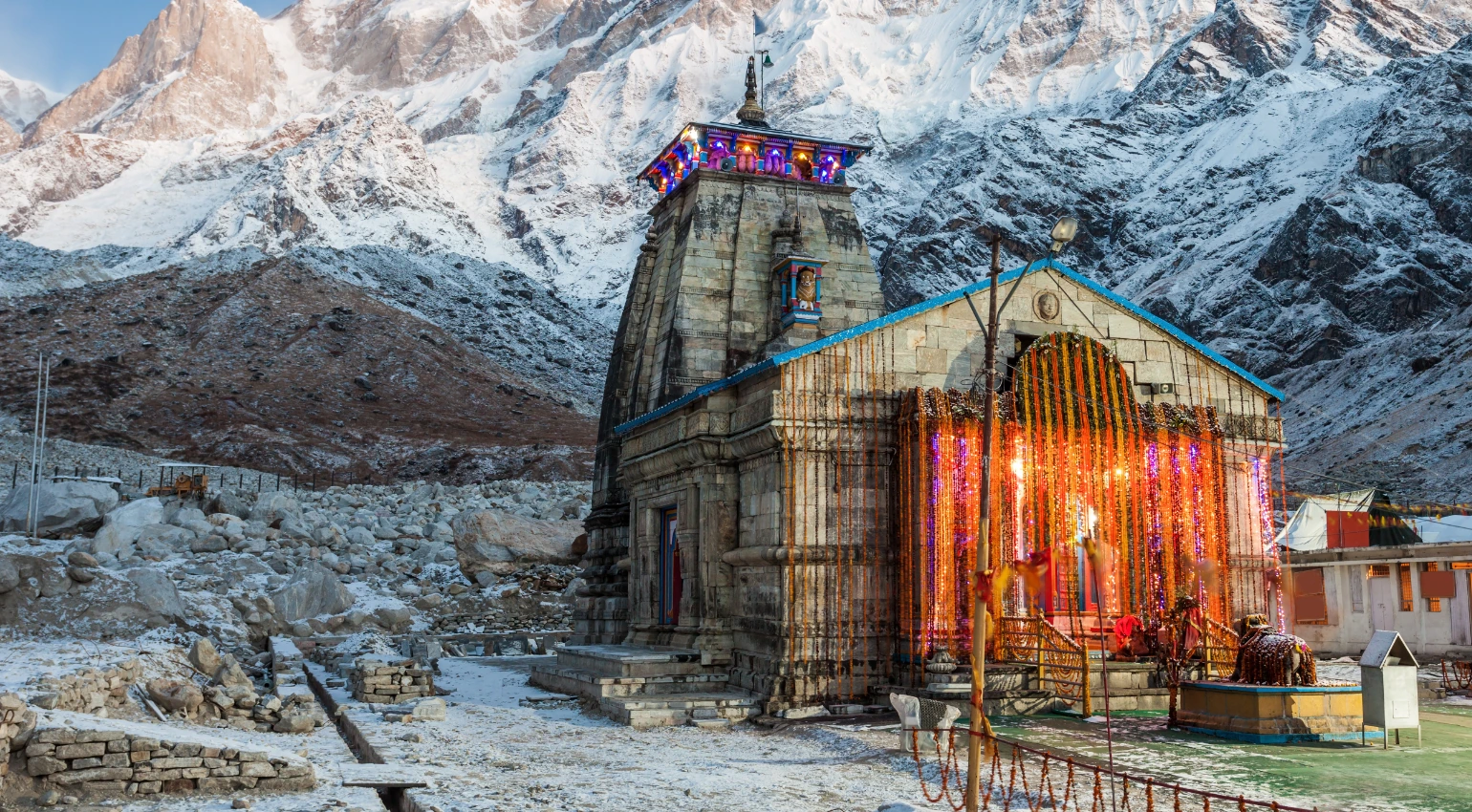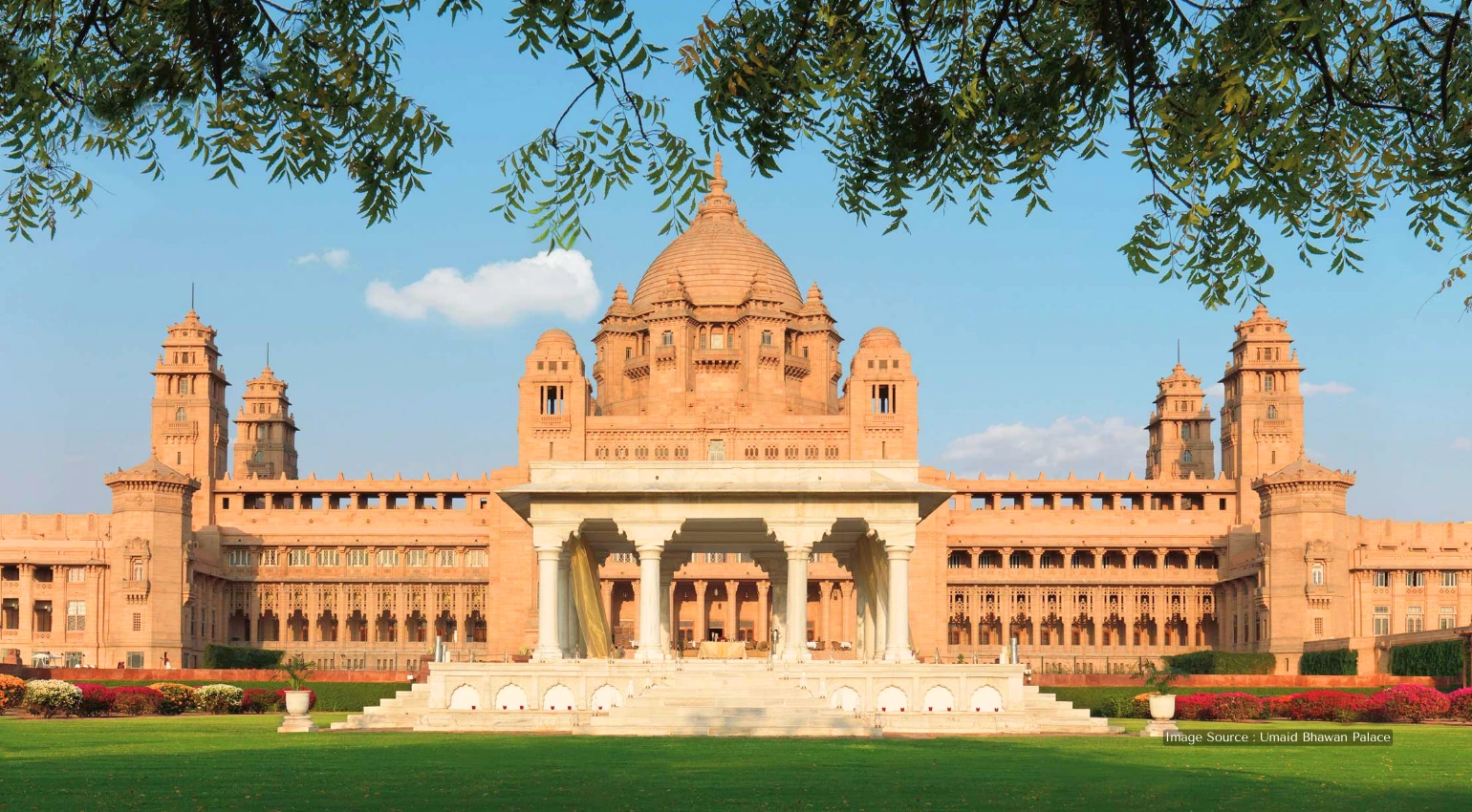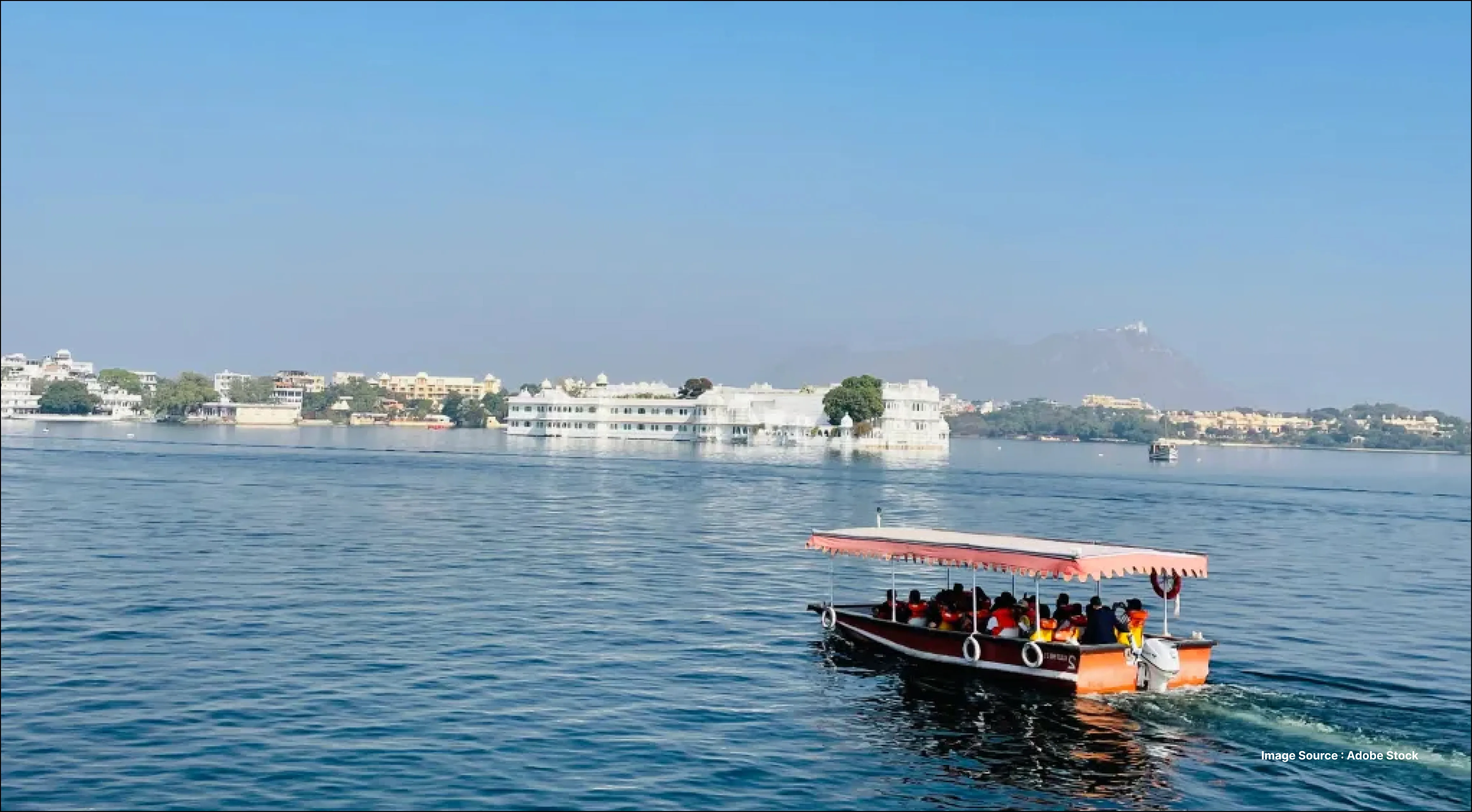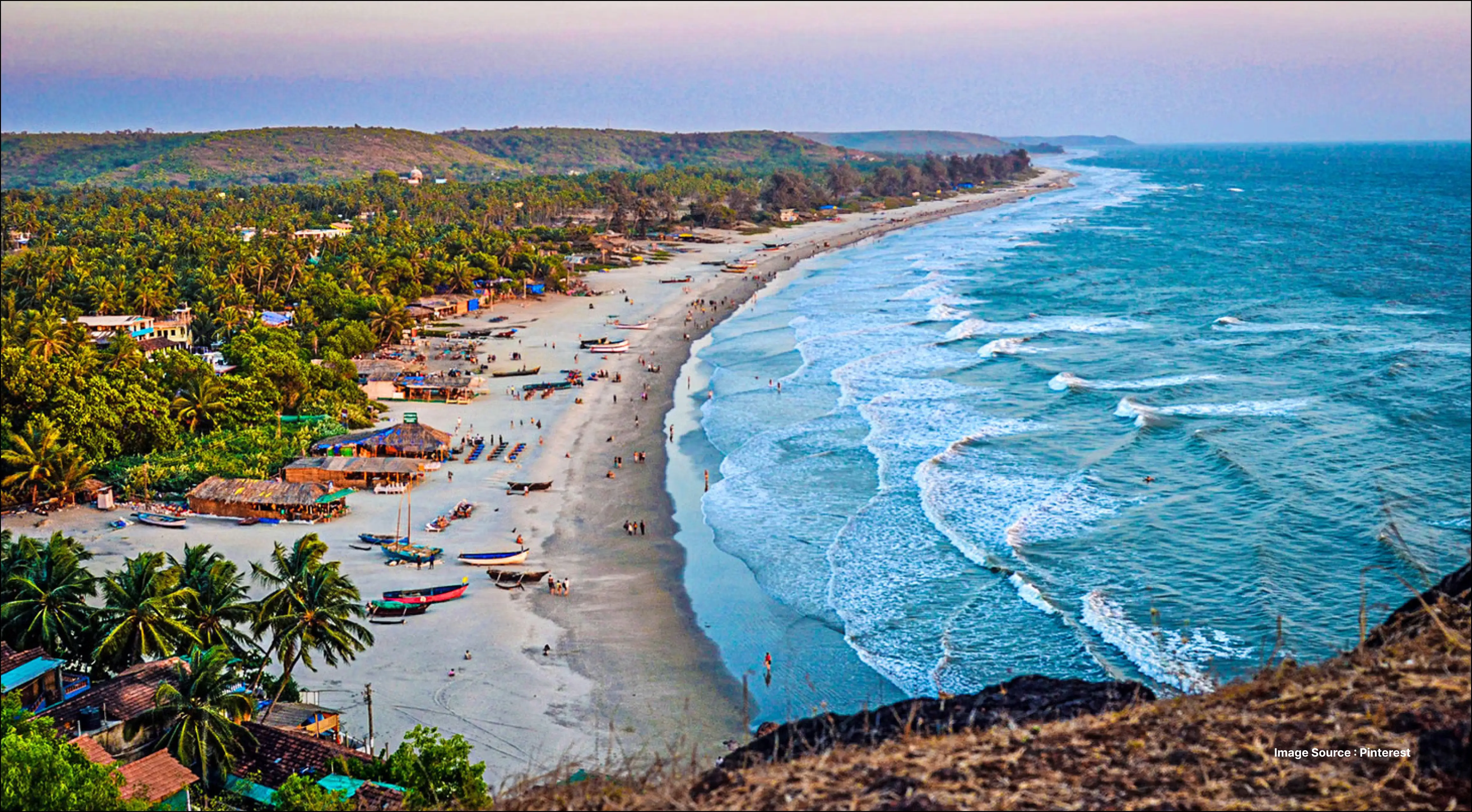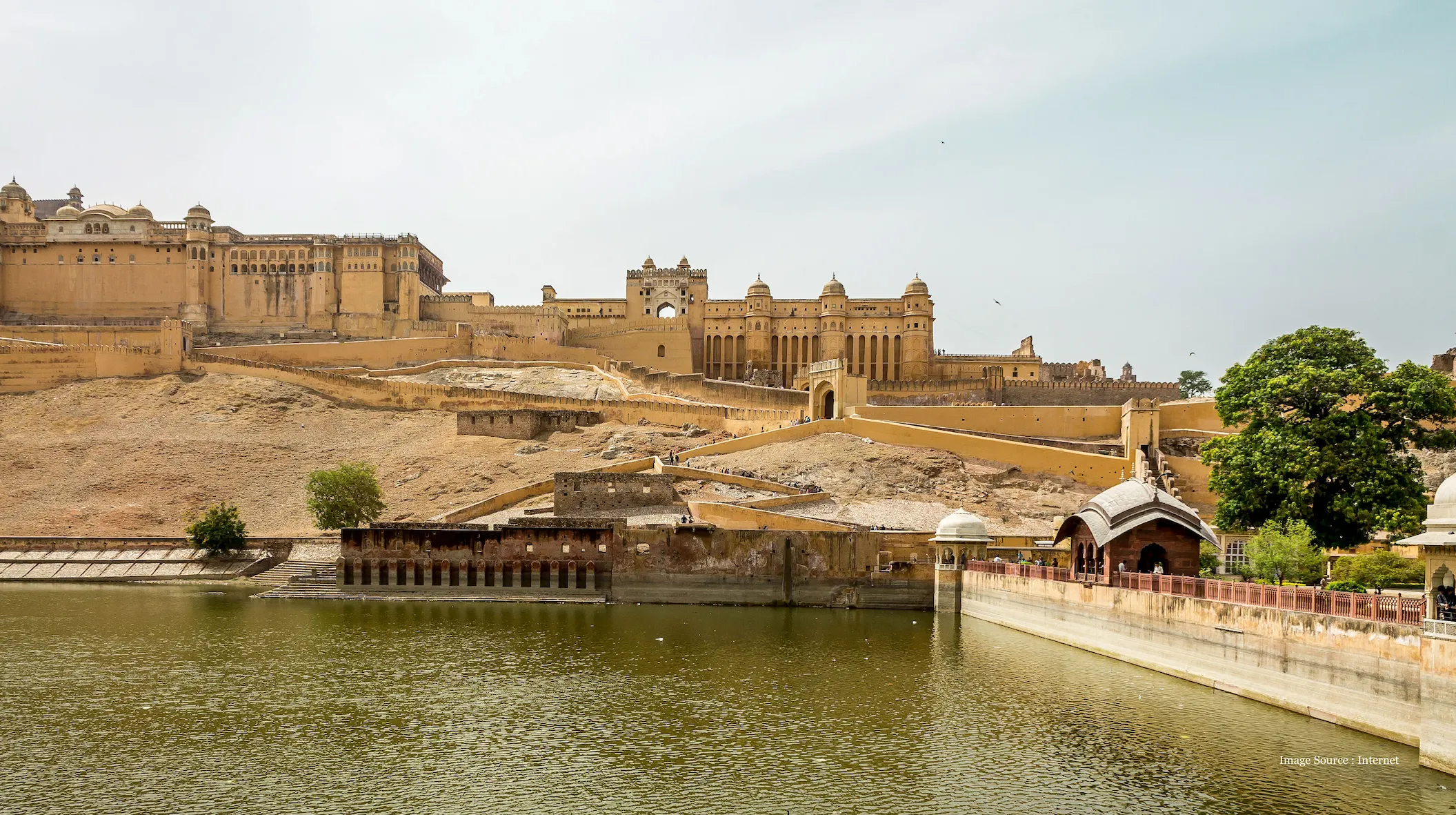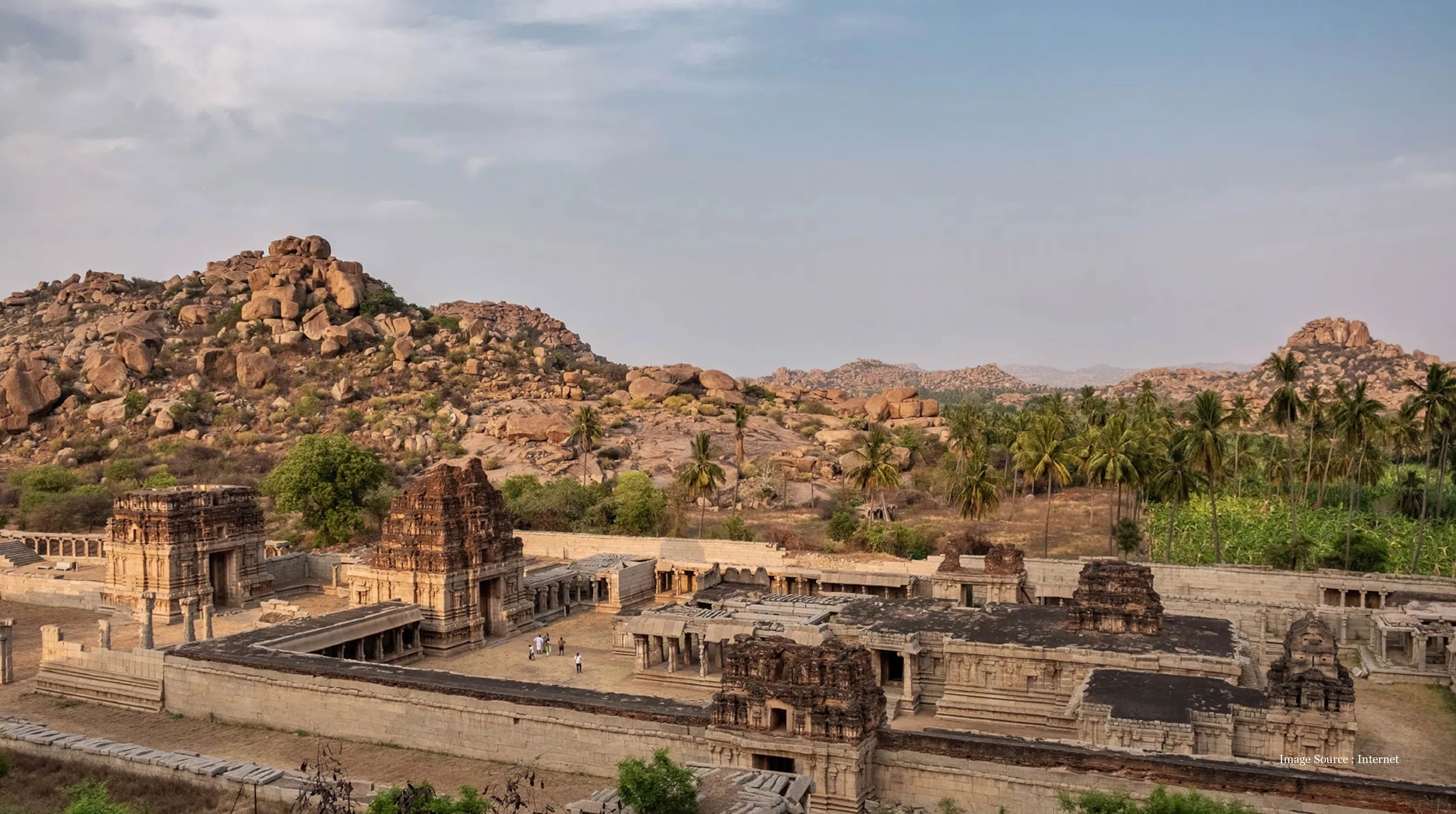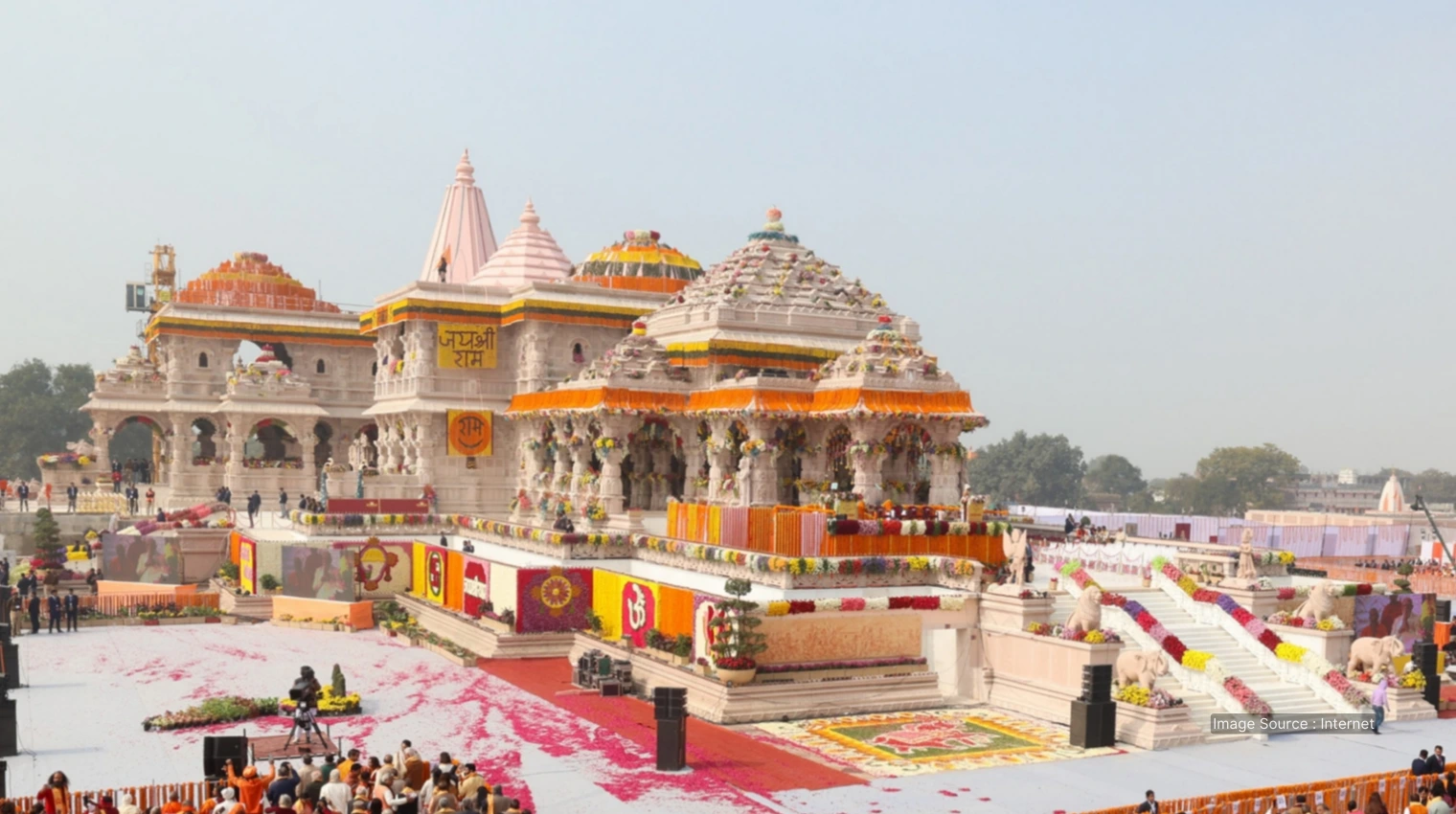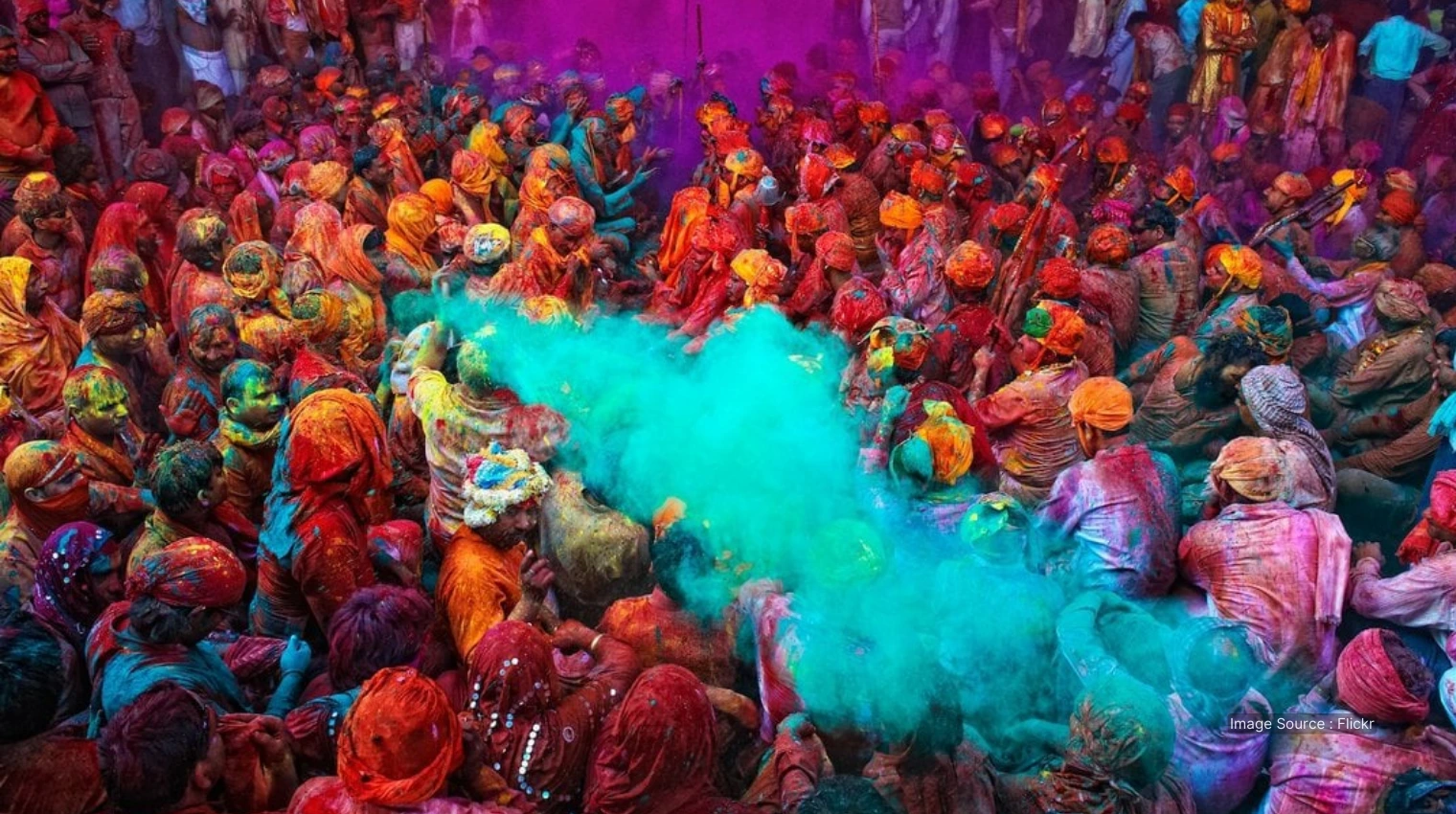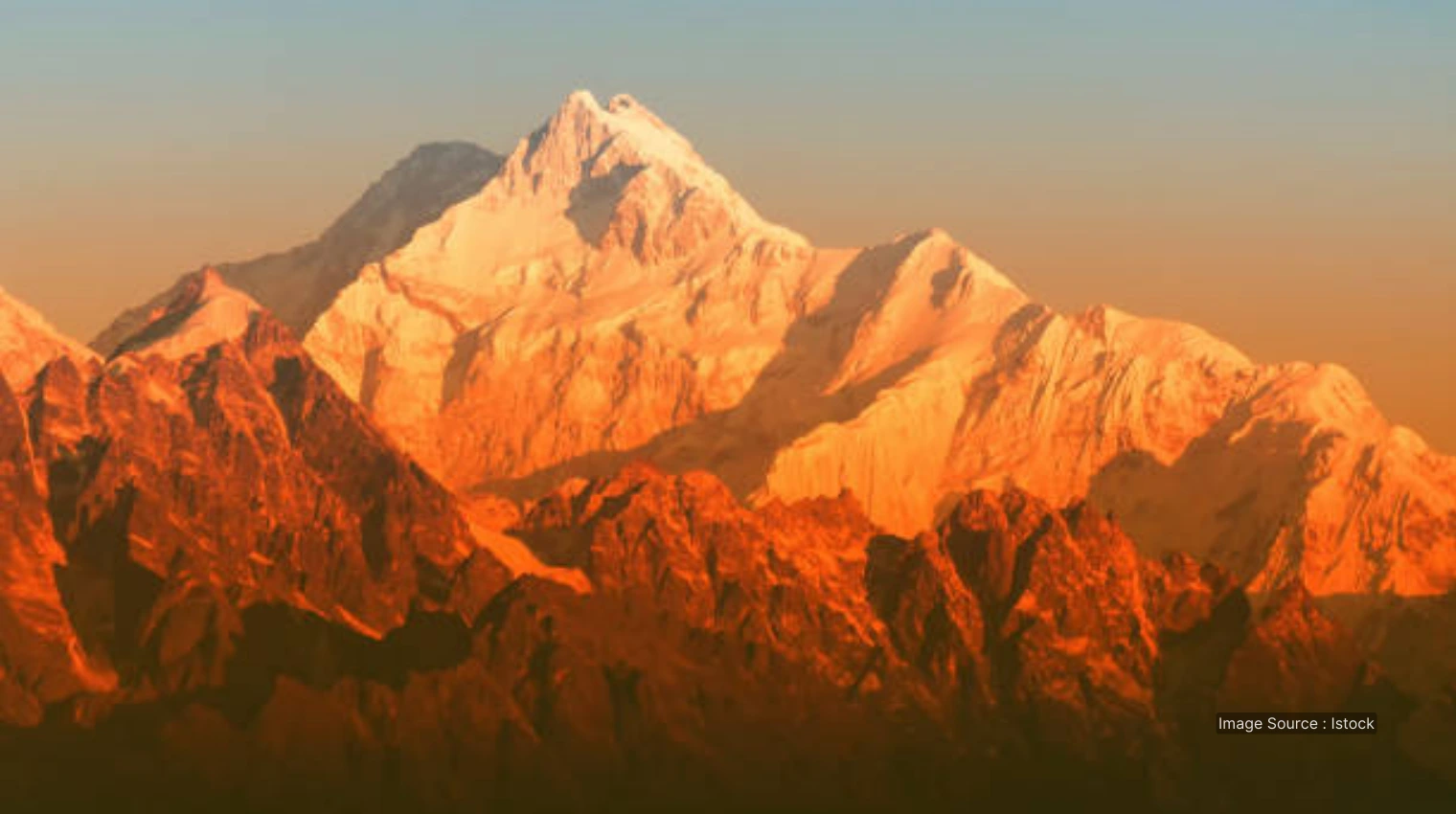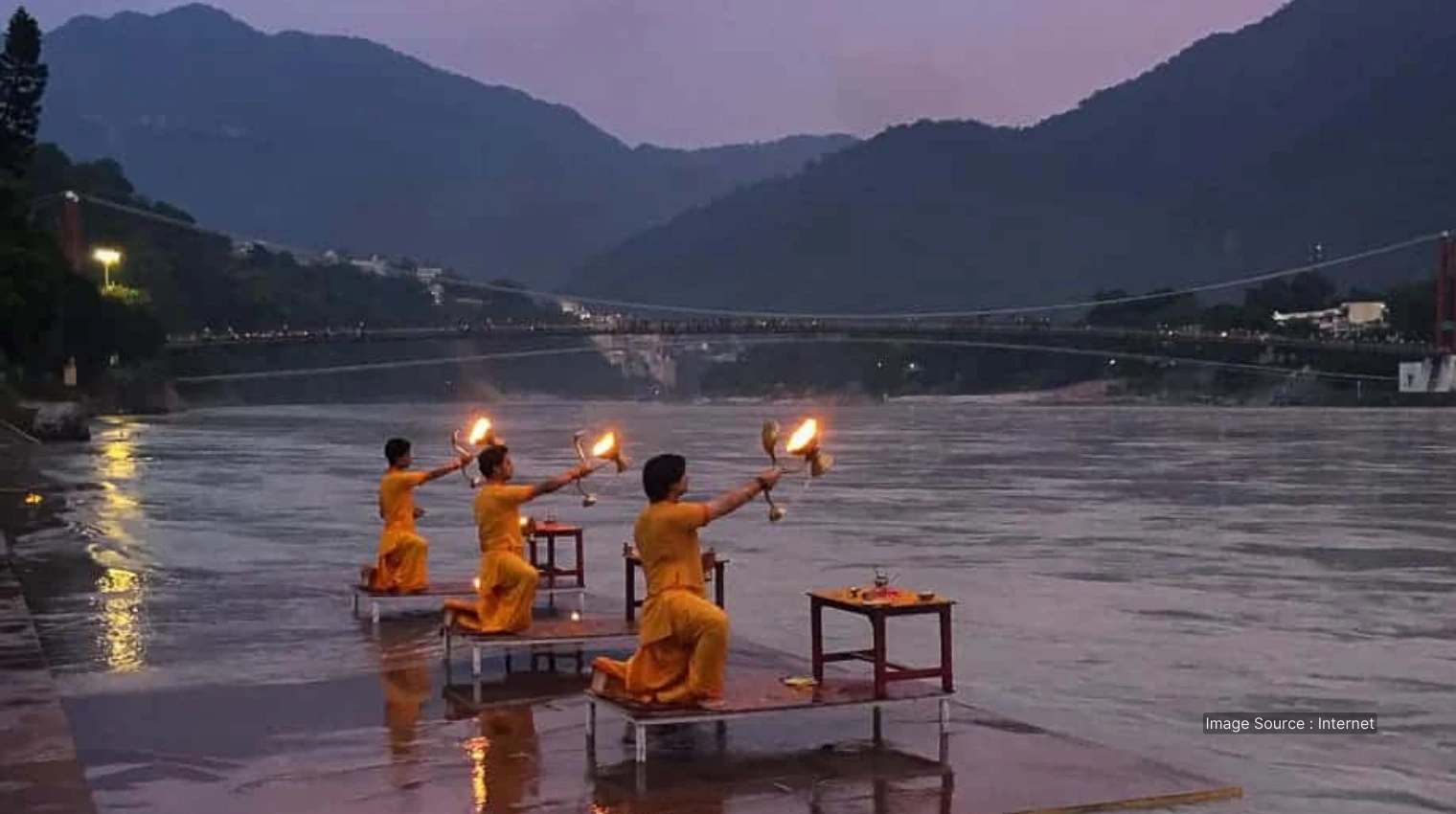- Why are Indian Temples unlike elsewhere in the world?
- The Ultimate Indian Temple Tour: The Char Dham Circuit
- Where do Northern India’s Most Sacred Sites lie?
- FAQs
- 1. Badrinath– the Himalayan Abode
- 2. Puri– Where the Ocean meets Devotion
- 3. Rameshwaram– the Southern Sanctuary
- 4. Dwarka– Lord Krishna’s Abode
- 1. Varanasi– the Eternal City
- 2. Bodhgaya– Where Buddhism Began
- 3. Khajuraho– Sacred Art in Stone
- 1. Tamil Nadu
- 2. Kerala
- 3. Karnataka
Last Updated : Oct 01, 2025 | View Count : 1165 | Read Time : 7 min
The Indian Temple Tour: A Sacred Journey of Renewal for Mind, Body, and Spirit
After a decade of venturing through sacred spaces & temples across India, I've learned that calling them just "religious buildings" is like calling the Taj Mahal "just a tomb." These sites are so much more. Every carved stone tells a story, every ritual carries meaning that stretches back thousands of years. So if you're planning a temple tour of India, you're in for your most extraordinary journey ever. With this ultimate Indian temple tour experience, you’ll witness craftsmanship so intricate it'll leave you questioning what human hands can actually achieve!
What makes an Indian temple tour an enlightening spiritual journey?
Indian temples offer more than religious visits - they're living museums of ancient engineering, astronomy, and artistry. The Char Dham pilgrimage covers four cardinal directions, while regional circuits in Tamil Nadu, Kerala, and Karnataka showcase unique architectural styles and living traditions that connect travelers to thousands of years of continuous spiritual practice
Table of Contents
1. Why are Indian Temples unlike elsewhere in the world?
2. The Ultimate Indian Temple Tour: The Char Dham Circuit
3. Where do Northern India’s Most Sacred Sites lie?
4. How can one experience South India’s Most Sacred Sojourns?
5. FAQs
Why are Indian Temples unlike elsewhere in the world?
India has more temples than any other country on Earth - we're talking over 2 million active temples, from tiny village shrines to massive complexes that rival entire cities. Yet here's the fascinating part: many of these ancient structures were designed by people who understood acoustics, astronomy, and engineering principles that we're still studying today. The Chidambaram temple has 21,600 golden tiles representing the number of breaths a human takes in 24 hours. Coincidence? I don't think so.
But what really appeals to me about traveling through temples in India is the sheer variety. In one trip, you can visit a 12,000-foot Himalayan temple accessible only by helicopter, a coastal shrine where the Arabian Sea crashes against 1,000-year-old stones, and an urban temple that sees more daily visitors than Times Square. That's not an exaggeration - Tirupati alone receives around 50,000 pilgrims every single day!
The Ultimate Indian Temple Tour: The Char Dham Circuit
The Char Dham represents Hinduism's most revered pilgrimage, covering four cardinal directions of the subcontinent. Badrinath, Puri, Rameshwaram & Dwarka form a quadrilateral on the map of India, perfect to explore all four regions in one tour. But the Char Dham isn't just a tourist circuit– it's the pilgrimage that Hindus believe completes their spiritual journey. I've done this circuit multiple times, and with each visit I discovered new layers of meaning to it.
1. Badrinath– the Himalayan Abode
Nestled at 10,279 feet in Uttarakhand's Garhwal Himalayas, Badrinath feels like stepping into another realm entirely. The season runs only from April to November only because winter here is brutal - we’re talking avalanches! The temple sits right where the Alaknanda River flows by. The Tapt Kund, close to the temple, is a hot spring where pilgrims bathe before entering, to purify themselves.
The main deity, Badri Vishal, is a black stone idol that local legend says was discovered in the river itself. When I stood before the deity, surrounded by the sound of chanting and mountain wind, I felt a profound sense of being at the edge of the world. None of my other travels have ever matched that feeling.
2. Puri– Where the Ocean meets Devotion
From the Himalayas, we track our way to eastern India’s Odisha. Here, a small town called Puri hosts the Jagannath Temple, a 12th-century marvel sitting just kilometers from the Bay of Bengal. The main deity, Lord Jagannath, has eyes that seem to follow you, and the wooden idols here are replaced every twelve years in a ceremony so sacred that even its wood comes from specific trees.
If you can time your visit for Rath Yatra (usually June-July), you'll witness something incredible. Millions of devotees pull three massive chariots through the streets. I found myself in Puri during one of those processions once, and the energy was unlike anything I've experienced. Just watching it from the balcony of my hotel was moving.
3. Rameshwaram– the Southern Sanctuary
Rameshwaram Temple in Tamil Nadu represents the Char Dham's southern point, and reaching the town feels like entering the Ramayana (the Hindu Epic) itself. The Rameshwaram temple's thousand-pillared corridors stretch endlessly, each pillar uniquely carved. Walking these halls, you hear centuries of prayers echoing off stone walls. The temple houses one of India's twelve Jyotirlingas, making it doubly sacred for devotees.
The temple's 22 sacred wells, each with supposedly different healing properties, are a mystic in itself. I've tasted water from several, and I swear they do taste different despite being so close together! While you’re here, make a short trip to Dhanushkodi, where the Indian Ocean and Bay of Bengal actually meet. For luxury travelers, I recommend staying at the Hyatt Place for the best views & comforts in town.
4. Dwarka– Lord Krishna’s Abode
Dwarka sits at the westernmost tip of Gujarat, where the Arabian Sea stretches endlessly. The Dwarkadhish Temple occupies the exact spot where Krishna is believed to have ruled his kingdom. That's not just mythology for locals - it's living history. The temple's architecture showcases intricate Chalukya style, with a 78-meter spire that's visible from miles away.
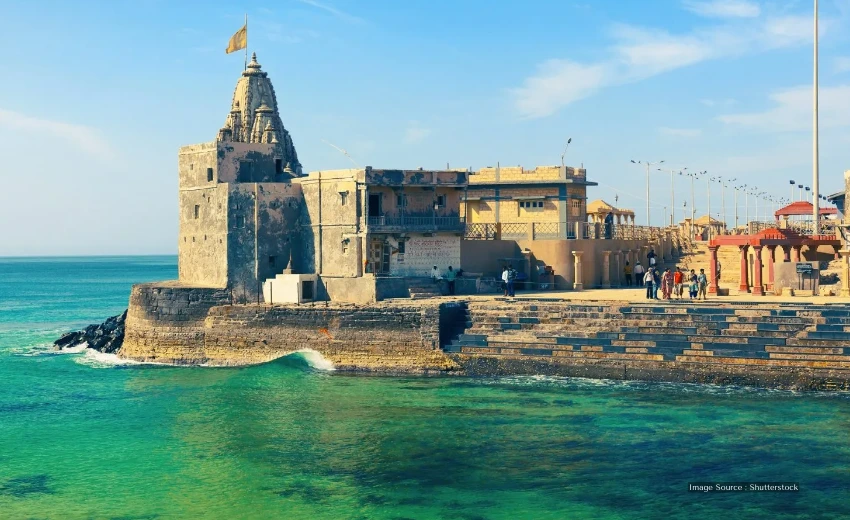
What fascinates me most is the underwater archaeology here. Marine excavations have revealed structures that might be remnants of the original Dwarka from the times of Lord Krishna! Take a refreshing private boat ride to Beyt Dwarka if you want a quieter temple experience. I recommend staying at the Fern Residency for your trip duration.
TL;DR: The Char Dham covers India's four cardinal directions - Badrinath in the Himalayas, Puri on the eastern coast, Rameshwaram in the south, and Dwarka in the west - forming Hinduism's most revered pilgrimage that completes one's spiritual journey.
Book your sacred Char Dham journey
Where do Northern India’s Most Sacred Sites lie?
1. Varanasi– the Eternal City
I've been to Varanasi dozens of times, and it still surprises me with every visit. This isn't just India's oldest continuously inhabited city - it's where life and death exist side by side. Cremation ghats operate continuously, yet there's no morbidity, just profound acceptance. The Kashi Vishwanath Temple here houses one of the twelve Jyotirlingas, but honestly, the entire city functions as one massive temple. Every ghat, every narrow alley, every ancient temple here pulses with spiritual energy. The evening Ganga Aarti at Dashashwamedh Ghat draws crowds from around the globe, and I urge you to not miss it either.
2. Bodhgaya– Where Buddhism Began
The Mahabodhi Temple in Bodhgaya marks the exact spot where Buddha achieved enlightenment. There's something about the place that quiets your mind automatically. Pilgrims from across the Buddhist world gather here– you'll hear prayers in Thai, Japanese, Tibetan, and a dozen other languages. The majestic Bodhi tree stands tall in the middle of the complex, although it’s the descendant of the original tree Lord Buddha meditated under.
3. Khajuraho– Sacred Art in Stone
Khajuraho’s UNESCO World Heritage monuments are a glorious display of Chandela dynasty craftsmanship that's simply unparalleled. The intricate sculptures tell divine stories of gods, goddesses, and human emotions with breathtaking detail. Contrary to popular belief, I found only about ten percent of the carvings erotic. The majority depict daily life, celestial beings, and spiritual practices. The Kandariya Mahadeva Temple stands as the group's masterpiece, its towering spire reaching toward heaven while intricate carvings celebrate earthly existence. The evening light and sound show here brings these stones to life in ways that daylight visits can't match.
Plan your spiritual India tour
TL;DR: For spiritual seekers, Northern India offers Varanasi along the Ganges, Bodhgaya marking Buddha's enlightenment spots, and Khajuraho's UNESCO temples among many other cities.
How can one experience South India’s Most Sacred Sojourns?
1. Tamil Nadu
Starting your South Indian temple tour in Tamil Nadu makes perfect sense - this state alone has over 38,000 temples. I always fly our guests into Chennai first because the international connections are excellent, and luxury hotels like The Leela Palace understand exactly what you need on a spiritual tour. I recommend beginning with Mahabalipuram (just 90 minutes from Chennai) because it's the perfect introduction to what you're about to experience. Those UNESCO World Heritage shore temples gave me goosebumps the first time I saw them - stone elephants & chariots from eras ago. It never fails to set the right tone.
Move to Thanjavur's Brihadeeswarar Temple, which still baffles engineers - that massive granite dome built without mortar over 1,000 years ago gives me goosebumps every time. And then, Madurai is where you see traditions the most alive. The Meenakshi Temple functions like a living city. I've witnessed the evening ceremony here at least five times and it still amazes me. Those colorful gopurams aren't just towers, they're like encyclopedias carved in stone. Next you can visit Rameshwaram, as covered in the earlier Char Dham section.
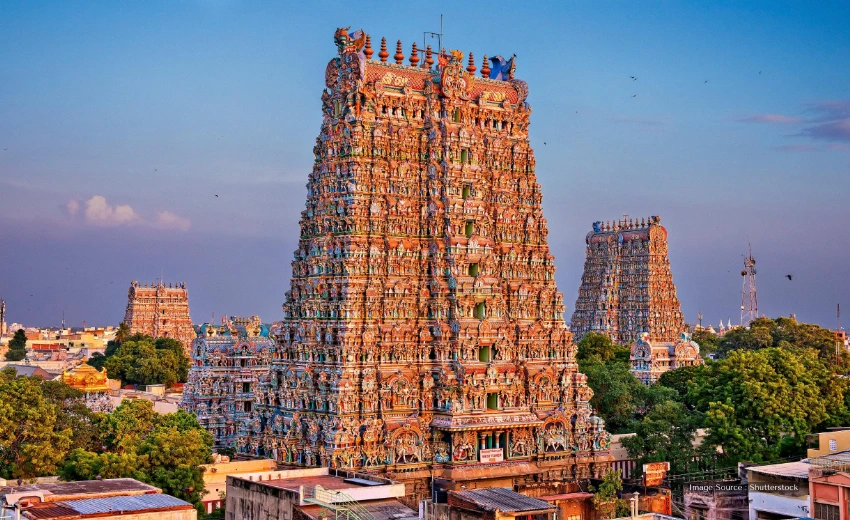
Expert-Recommended Route: Chennai → Mahabalipuram (90 min) → Thanjavur (4 hours) → Madurai (3 hours) → Rameswaram (4 hours)
2. Kerala
Kerala works differently, with smaller temples between backwaters and beaches. I always start in Kochi where international flights land easily. From there, you can take a 2 hour scenic drive to visit Guruvayur (2 hours north), which houses Kerala's most important Krishna temple. From here, you should travel through the Kerala Backwaters on a relaxing 3-4 day long trip. Visit Alleppey for the ultimate houseboat experience, Munnar for a hill escape, and Thekkady for your wildlife adventure. Make your way to Trivandrum, where the Padmanabhaswamy Temple has already made headlines with its treasure-like discoveries. In & around Kerala’s capital city, you can visit more temples & sacred sites that put up a show of local rituals & festivities from time to time.
Expert-Recommended Route: Kochi → Guruvayur → Alleppey→ Munnar→ Thekkady→ Trivandrum
3. Karnataka
In Karnataka, Bangalore’s international airport is where you’ll most likely land if you’re coming to India only to explore the Southern region. From here, take a three-hour drive to the royal city of Mysore. Here, the Chamundeshwari Temple & the view over Mysore Palace still fascinates me every time. Belur and Halebidu (4 hours from Mysore) are some of the fewest examples of Hoysala architecture to witness. I use magnifying glasses to see details you’d otherwise miss in its carvings. At Hampi, The Virupaksha & Vittala Temples sit among the Vijayanagara empire ruins that transport you to another world entirely. From Hampi, you can choose to extend your trip to the Indian coastline with a visit to either Gokarna or Goa.
Expert-Recommended Route: Bangalore → Mysore → Belur/Halebidu → Hampi→ Coastal Karnataka for your onward journey
Customise Your South Indian temple tour
FAQs
1. What's the best time for temple tours in India?
As a general rule of thumb, it is best to visit most regions of India between October to March, avoiding monsoons and extreme heat. However, you might want to check out the religious festivals that happen around the year at these destinations, and time your visit to coincide with them.
2. Can non-Hindus visit all Indian temples?
The vast majority welcome all visitors, though some restrict access to their inner sanctums. A very few temples remain Hindu-only, but they're rare exceptions rather than the rule. Puri’s Jagannath Temple is an example.
3. Are Indian temples wheelchair accessible?
Most historic Indian temples weren't built with accessibility in mind. We're talking about structures that are hundreds, sometimes thousands of years old. You'll find steep steps, uneven stone pathways, narrow entrances, and multiple levels that make wheelchair access slightly difficult. But with a 24/7 white-glove concierge by your side, you won’t have to worry about accessibility.
plan your bespoke india journey today
tell us what inspires you - and we will handcraft an experience that mirrors your elegance, pace & personality.
START PLANNINGBlogs Categories
It is a Sanskrit verse taken from an ancient Bharat (Indian) scripture
which means ‘The Guest is like God’.
In Bharat (India), guests are always welcomed with open arms and given
You Will Like These Too...
It is a Sanskrit verse taken from an ancient Bharat (Indian) scripture
which means ‘The Guest is like God’.
In Bharat (India), guests are always welcomed with open arms and given
TRAVELOSEI PROMISE
What To Expect?
The Real India,
Re-Imagined For You
India is not just a destination - it's a world with-in the world. TRAVELOSEI go far beyond guide-books to offer you an India that is authentic yet exclusive, spiritual yet sophisticated delivered through private doors, rare access, and impeccable attention to details.
Trusted By Global Elites
From World Class Leaders to Forbes Listed Families and international Royalties to visionary CEOS.
Our clientele chooses us for one reason - We Know India. Over two decades of providing experiences which aren't just luxurious - they are intimate, curated & wildly rare.
Bespoke Travel Experience
For those who seek truth in detail, art in hospitality, and identity in experience. Our Luxury Travel Architect work discreetly and personally with you to craft travel experiences that go beyond 5 Stars, where every detail whispers luxury - and legacy.
White-Glove Concierge
24 X 7 Dedicated Concierge Support even in the wildest corners of India. At TRAVELOSEI, our concierge team ensures that everything-from airport- tarmac pick-ups, last minute reservations and private spiritual sessions - is handled before you even ask.

